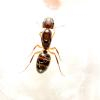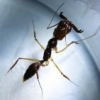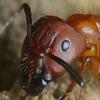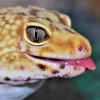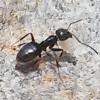Only some Solenopsis invicta are polygynous. The vast majority of them are monogynous.
Apparently it appears that there might have been a nuptial flight of Solenopsis (invicta?) sp. sometime yesterday at my apartment complex, and actually by my work about 10 miles away. I managed to collect one queen at work, and 7 others when I got home. I spotted around 40 within an area less than the size of a football field (only checking concrete and visible dirt), how exciting!
By the dumpster, I found 5 queens hiding together under a wood chip, so, I figured why not throw them all (three of them, another by itself, and the fifth got away) in a tube setup together. We'll see what happens in about a week, but they did not show any signs of aggression, yet. I don't know a lot about ants yet, but they were piled on top of each other.
This thread is very helpful! Thanks for the info from everyone.
I have yet to see anything but Solenopsis sp. queens in my hunts, there are some Small Black Ants about, but I haven't bothered looking into their nuptial times yet.



